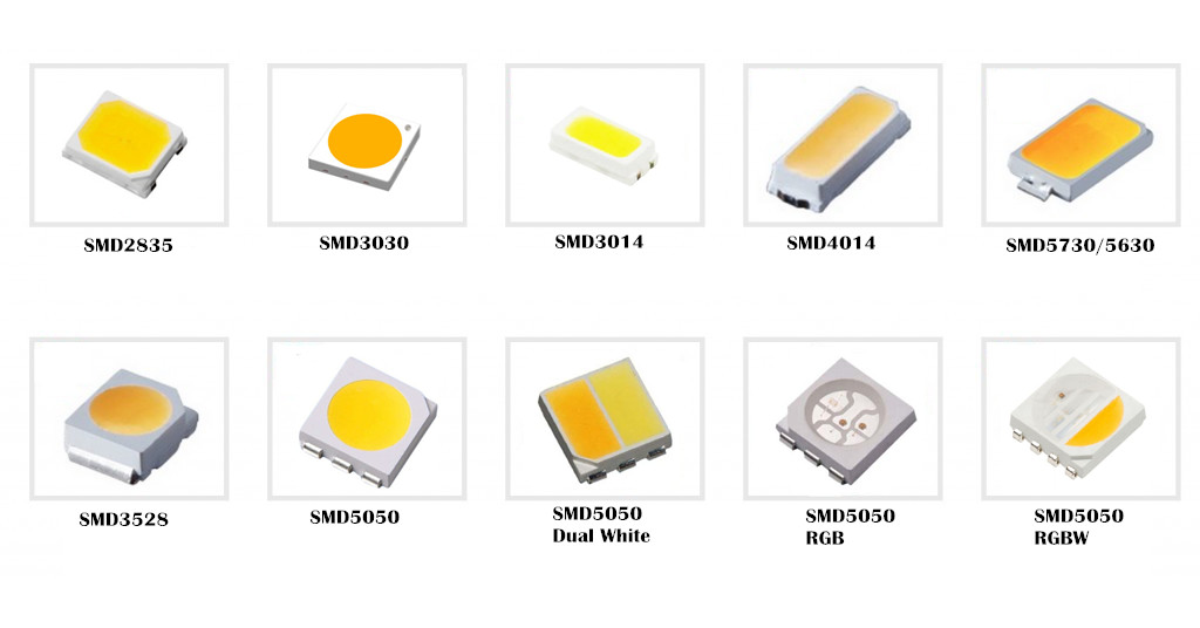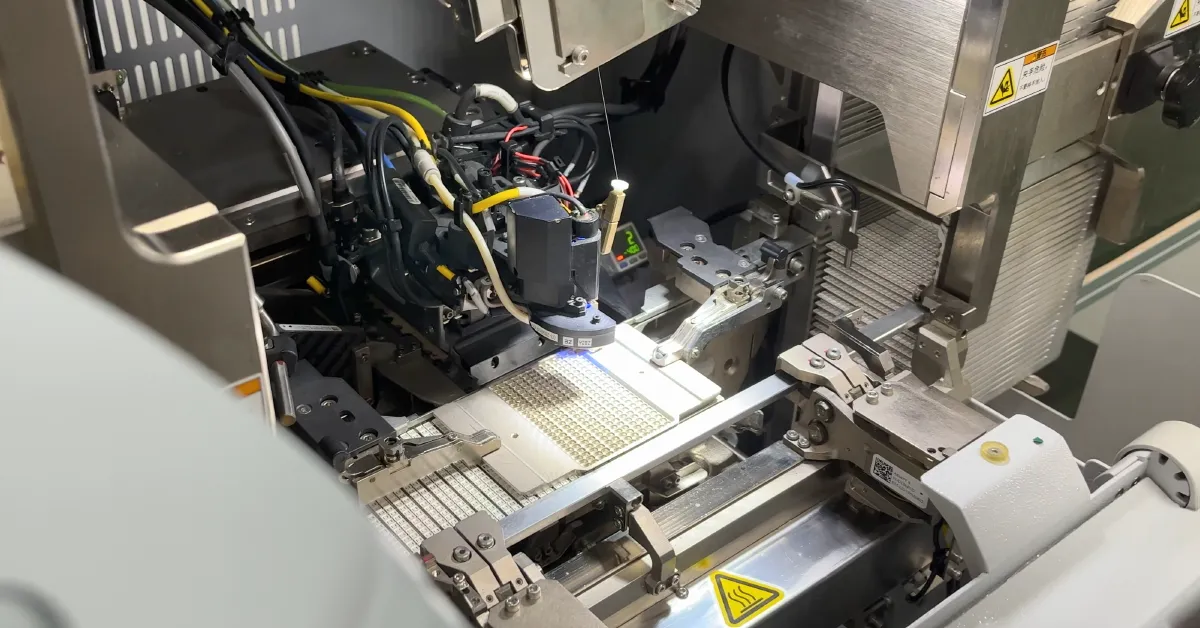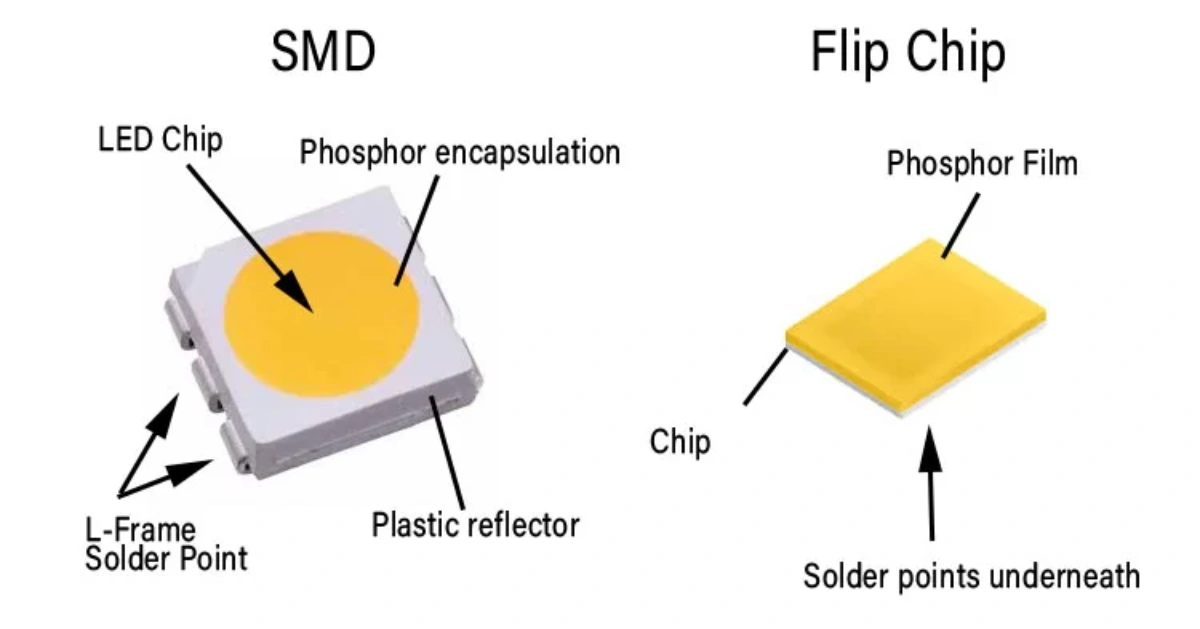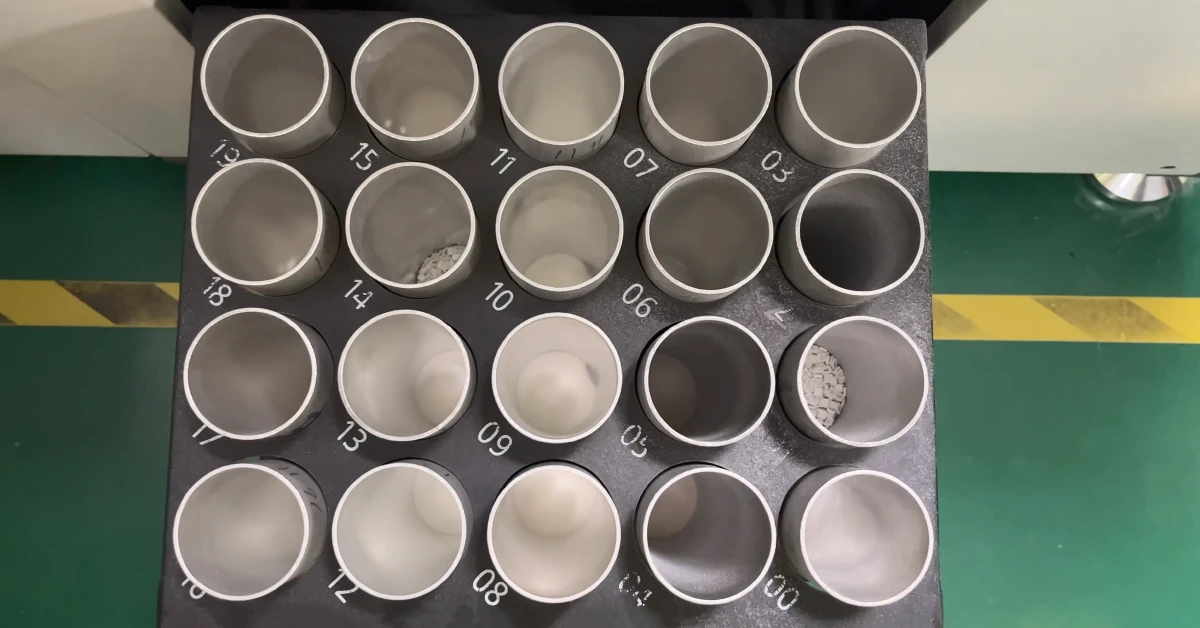LEDs (light-emitting diodes) are small electronic components that emit light when an electrical current flows through them. They are commonly used as a light source in many applications, including LED strip lights.
LED strip lights are, in essence, just a series of LEDs mounted on a strip. When powered, these LEDs emit light, which creates the visual effect of a continuous line of light.
Consequently, the choice of LEDs used in an LED strip light is eminently of significance, which can affect the LED strip lights’ color, brightness, efficiency, lifespan and the like.

But how does it affect?
After reading this article and being aware of the manufacturing process of LEDs, this problem will be easily solved.
LED Manufacturing process
If you prefer written instructions, please keep reading . The manufacturing process of LEDs is separated into the following steps: die bonding, wire bonding, phosphor coating, curing, binning, dehumidification, and packaging.
Die bonding
Before entering this step, in terms of structure, A LED is essentially a plastic package that holds the small LED chip. This process starts from a blue wafer with thousands of LED chips. There will be a machine collecting the LED chip from the blue wafer into the package and there’s a tray of about 500 or 800 packages. After that, die attach adhesive will stick the LED chip and the package together. This stage is ordinarily called die bonding.

Wire bonding
In this step, the wire bonder will bond the LED chip and the solder pads under the package together using golden or alloy wire to connect the positive and negative electrodes of the LED chip to relative solder pads in the package so that the electric current can flow through smoothly. This step is known as wire bonding.

Phosphor coating
If passing the above test, a machine will place phosphor coating on the top of LED chip in the package. Phosphor coating here is a mixture of phosphor and silicon according to a specific recipe which generally depends on what color temperature is trying to make. Although COB strip lights also use phosphor coating, both their phosphor and silicon have some differences.
The blue chip emits blue light in Step 1 and the light will turn white after this step. Incidentally, RGB strip lights do not have any phosphor, but depend on three chips emitting red, green, and blue light to demonstrate various colors.

Curing
After placing the phosphor coating, curing is an inevitable step. LEDs will be put into an oven, and curing normally comprises two sections at different temperatures. The temperature of the first section is about 80 degrees and LEDs will be cured for around a half hour or an hour in this section. The temperature of the second section is about 150 degrees and LEDs will be cured for around three or four hours. The curing time differs for phosphor coatings with different features.

Then there’s a machine peeling LEDs from the tray mentioned in step 1 and assembling them together.
Binning
At this time, a little conveyor belt will move the LEDs one after another to measure data by an integrating sphere. And then they will get into various tubes and slide into diverse bins because of the different data, which generally has color temperature, luminous flux, voltage and the like. These data are the most critical for LEDs’ being binning.

Dehumidification and packaging
After binning, there’s the round of dehumidification, which is requisite. The dehumidified LEDs must be packaged into bags in 2-4 hours on different bins. And then LEDs in different bags will be attached onto different reels. After reels are put into bags, every bag needs to be vacuumed and have desiccants.

Influences on LED strips
This is the whole manufacturing process for LEDs. LEDs produced according to different standards and different raw materials will make the light strips present different lighting effects. Besides, LED strip lights’ lifespan is pertinent to them as well. Next, these influences will be illuminated from two aspects, the influence of the manufacturing process and the raw material of LEDs.
The influence of manufacturing process
The manufacturing process of LEDs can have a significant influence on their overall performance and quality, which in turn can affect LED strip lights. These impacts are primarily embodied in the choice of LED chip encapsulation technologies, wire bonding, phosphor coating curing, binning, and dehumidification.
LED chip encapsulation technology

Front-mount chip, flip chip, and vertical chip are different types of encapsulation technologies for LED chips that can impact the performance, cost, and design of LED products, including LED strip lights.
Front-mount chip encapsulation is a traditional and widely-used LED encapsulation technology in which the LED chip’s positive and negative electrodes are on top, and the wire bond connections are made to the bottom surface.
However, flip chip encapsulation involves flipping the LED chip upside down and directly mounting it onto the PCB, which means the positive and negative electrodes of the LED chip are on the bottom and connected to solder pads in the package. Wire bonding is not needed. In terms of luminous efficiency, heat dissipation, performance parameters, and lifespan, a flip chip is better than a front-mount chip. And it can be used for high power, car lights and COB spotlights with a ceramic substrate.
Additionally, there’s a vertical chip. One electrode is on the top, and another is on the bottom.
Wire bonding

The above are just LED chips’ packaging technologies, and they’re optional. But wire bonding needs to meet the standard and pass the inspection. Routinely after wire bonding, a tensile testing machine will inspect the tensile stress between the wire-bonded LED chip and package. Pertinent parameters need to meet the standard. So this process is extremely critical. If the bonding wire is poor, it may cause the LED not to emit light.
Phosphor coating curing
Phosphor coating curing is as considerable as wire bonding, which represents the major reason that a great phosphor coating cure can better remove the bubbles inside the phosphor and package.
Combined with a low initiation temperature and then a high temperature, like 80 degrees and 150 degrees, the phosphor coating is not easy to oxidize and crack, so the LED chips have a better lifespan, accuracy, light effect, and consistency.
Binning
One bin does not mean the data of all the LED in this bin is the same. There will be a data range. Only LEDs within the data range will be put into a bin. So the most significant issue is the data range represented by a bin. The data range, or standard of binning, is obscure and uncertain, but one thing is absolutely confirmed. The smaller the data range is and the more categories there are, the more careful the binning is, the better the color consistency is and the better the effect of the light is.
The data categories are luminous flux, voltage mentioned above, mainly color temperature and SDCM (Standard Deviation Color Matching).
So it is likely that LED strip lights made with LEDs from two bins are better than one bin.

Dehumidification
This stage is actually important as well. Especially if dehumidification is not done well, when LEDs get into the reflow in the manufacturing process of LED strip lights, they might be scorched.
The influence of raw material
The above are the possible impacts on LED in the production process, which will directly affect the LED strip. In addition, the raw materials of LED are also a major influencing factor, roughly including the LED chip, package, wire, phosphor, and quality management and renovation.
LED chip
The smaller the size of the LED chip is, the lower the brightness and power are. Ordinarily, the LED chip is 0.2 watts per piece. LED strip lights with high power, 7-year warranty use LED chips with a larger size and a power of 0.5 watts per piece.
Additionally, electronic components need waterproof and anti-static storage.
Package
If there is a problem with the package, it may not be detectable by the naked eye, but it can be seen after curing, and the color of the package will apparently change. LEDs’ brightness will also be abnormal.
Wire

The size of the wire (cross section) and types of wire can affect an LED’s properties. The thicker wire can conduct more current, has less resistance and is more heat-resistant. Heat dissipation is better and the lifespan of LEDs is longer.
On the other hand, types of wire in general consist of golden, alloy wire. The differences between them are tensile stress, parameters and cost. Golden wire is more resistant to current, mechanical force and tensile stress, and has a longer life. Tensile stress means that when LEDs are illuminated and dissipate the heat, there’s a stress between the phosphor coating and the wire based on the phosphor coating’s thermal expansion and contraction.
Although golden wire has plenty of merits, replacing alloy wire with gold wire provides little improvement. As long as the power supply is stable, the two sorts of wire can maintain the same lifespan.
Phosphor(coating)
The different recipes of phosphor coating bring about different color temperatures, CRIs, and brightness of LED strip lights. The focus is on the ratio of different phosphors. The light emitted by LEDs varies with the ratio. For instance, a lower color temperature needs more red phosphor. On the contrary, a higher color temperature needs more green or yellow-green phosphor.

CRI 70, CRI 80 and CRI 90 are also mixed on the footing of different ratio of phosphor. But for high CRI, like CRI 90 or CRI 95, the phosphor cost will be higher, no matter in terms of raw material cost or processing technology.
In addition to using phosphors for high CRI LED strip, changing LED chip is another way, specifically double photoexcitation and triple photoexcitation. For instance, to achieve CRI 98+, the former uses two chips, two blue LED chips or one blue and one purple LED chip. However, the latter uses three chips, just adding a red LED chip.
Double photoexcitation dodges harmful blue light in the spectrum in order to make LED strips up to the RG0 standard which is stricter than RG1.
The quality management and renovation of raw material
Like the aforementioned phosphor, LED chip, package, and wire, their inventories are cleaned up about once a quarter. Meanwhile, raw materials are renewed and advanced towards better performance, which maybe involves a problem. ——LEDs from last month may be slightly different from ones this month making as the same requirements. That might be because the raw material is being updated. But don’t worry. Deviations exist objectively and cannot be avoided. As long as it does not affect the final presentation effect and requirements.
Final words
The use of high-quality LEDs made with great raw materials and careful attention to the manufacturing process can result in LED strip lights with superior performance, efficiency, and durability. Furthermore, working atmosphere needs to pay attention to avoid sulfide.






2835
9 volt
0.5 Watt
6500k